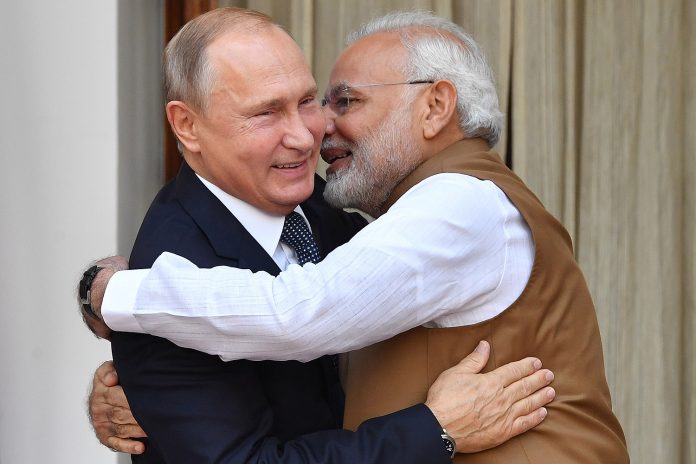This article has been written by Akshay Verma, pursuing a Diploma in M&A, Institutional Finance, and Investment Laws (PE and VC transactions) from LawSikho.
Table of Contents
Introduction
M&A transactions are not only consummated for growth and generating new ideas. There is also a chance that the companies merge with each other to destroy competition and to create a monopoly in the market. To keep these activities of companies in check, all countries have their merger control laws or regulations which restrict these activities of companies. Merger control enforcement continues to grow around the globe. In this article, I will comparatively analyze the merger control regime of India, an Asian country, and Russia, a transcontinental nation spanning Eastern Europe and North Asia.
The Competition Act,2002 is the primary legislation that governs combinations in India. Whereas, in Russia, the merger control regime is primarily governed by Federal Law No. 135-FZ On Protection of Competition (the “Competition Law”), which came into force on October 26, 2006.
Regulatory authorities
In India, the Competition Commission of India (CCI) is the regulatory authority responsible for reviewing and assessing combinations. In the case of merger control, the CCI performs more of a regulatory and reviewing role and has a separate division called the “Combination Division” which carries out these functions. Whereas, in Russia, combinations are reviewed and assessed by the Federal Antimonopoly Service (FAS).
Thresholds that determine whether a merger notification must be filed
In India, before the amendment in the Act in 2007, merger notification was considered to be an “optional proposition” i.e., the parties were at liberty to notify after the consummation of the transaction. After the amendment in 2007, the merger control regime introduced the mandatory requirement of filing a notification as a suspensory obligation. The suspensory obligation requires parties to make a notification to the CCI regarding the nature of their proposed transaction immediately after the approval of the Board of Directors of the company and not consummate it before they receive the approval of the CCI. It is a mandatory requirement to file a merger notification if the target enterprise (which is sought to be acquired, merged, or amalgamated) has assets worth more than INR 350 crores or a turnover worth more than INR 1000 crores. If a particular division of an enterprise is targeted then the financials of that division will be assessed as per the Target Exemption Thresholds. This is the initial level of assessment which is generally done at the preliminary level to determine or filter out transactions that need not be notified. If the parties fail to get the required target exemption, then as a part of the second level of assessment, the assets and turnover of the combining parties will be examined on the basis of certain jurisdictional thresholds which is known as the Parties Test and the Group Test.
If the assets and turnover of the parties breach these thresholds, then a mandatory notification will have to be made to the CCI. These thresholds are also applicable to foreign transactions if they have the required assets and turnover present in India.
Whereas, In Russia, a mandatory notification must be filed if:
- The shares of a Russian organization are directly acquired.
- The assets acquired are located in Russia.
- Control over a Russian organization is established either directly or indirectly;
- Control over a non-Russian organization that supplied (services, works) to Russia in an amount exceeding RUB 1 billion during the year preceding the transaction’s closing, is indirectly established.
- The activities of the joint venture created relate to the Russian territory.
In case an above-mentioned jurisdictional threshold is satisfied, the monetary thresholds given below should also be considered:
- The global aggregate asset value of the parties to the transaction exceeds RUB 7 billion or the global aggregate turnover of the parties to the transaction exceeds RUB 10 billion.
- The global aggregate asset value of the target exceeds RUB 400 million.
Who is exempted from filing a merger notification?
In India, for the ease of doing business, small transactions are exempted from filing a notification, the Indian government has exempted those combinations where the target enterprise (which is sought to be acquired, merged, or amalgamated) has assets not exceeding INR 350 crores or a turnover not exceeding INR 1000 crores in India up to the year 2022 (“Target Exemption Thresholds”). If a particular division of an enterprise is targeted then the financials of that division will be assessed as per the Target Exemption Thresholds. This is the first level of assessment which is usually done at the preliminary level to determine or filter out transactions that need not be notified. If the parties do not get this Target Exemption, then as a part of the second level of assessment, the assets and turnover of the combining parties will be examined on the basis of certain jurisdictional thresholds which is termed as the Parties Test and the Group Test. If their assets and turnover breach these thresholds, then a mandatory notification will have to be made to the CCI. If these thresholds are not breached by the combining parties, then the transaction will be exempted from CCI scrutiny. These thresholds will be applicable to foreign transactions as well if they have the required assets and turnover present in India.
In Russia also, the combinations are exempted from filing a merger notification if the required thresholds are not breached.
Treatment of joint ventures
In India, joint ventures are not specifically dealt with under the Act from a merger control perspective. A joint venture comprising a merger or an acquisition that meets the Parties Test/Group Test will be subject to the notification obligation. Usually, a Greenfield joint venture (creation of a new setup) will be exempted under the target exemption. This is because, being a new venture, it will not have any assets or turnover of the preceding financial year to reflect and therefore it may not have assets or turnover of INR 350 crores or INR 1000 crores respectively thereby getting a target exemption.
Whereas, In Russia, the joint venture establishment usually involves the acquisition of shares, rights, or assets by the joint venture entity from its promoters and/or third parties. The formation of a joint venture is seen as an acquisition of assets, rights, or shares by the newly formed joint venture entity from its promoters. As a result, joint ventures do not usually need clearance under the general rules if (a) no legal entity is created. (b) the new entity is solely funded by cash contributions.
Process of filing a merger notification
In India, to make a notification before the Competition Commission of India, parties file either a short form (Form I) or a long-form (Form II) depending on the complexity of the transaction which is termed as a “Notice” under Section 6(2) of the Act. The CCI has 30 working days from the date of filing a notice to form a prima facie opinion on the existence of any appreciable adverse effect on competition (AAEC) in the relevant market. If the CCI feels that the transaction, on a prima facie level, should not be approved, it moves the transaction to Phase II for further assessment which sets in motion, the next level of assessment by including the opinions of third parties. Public notice is released for this opinion in the form of Form IV. The assessment of the CCI finally culminates into an order passed by the CCI under Section 31 which decides the fate of the combinations and suggested modifications if any.
Whereas, In Russia, there is no specific deadline to file a notification but the transaction may not be consummated before the approval of the FAS Russia. The notification may be filed with a draft of the binding agreement provided all the essential matters for the merger control review are defined and should not change.
Consequences of implementing a merger without approval
In India, a merger control regime is obligatory, and any violation of the same amounts to gun-jumping under Section 43-A of the Competition Act,2002. The CCI treats gun-jumping as
- Failure to notify a merger or;
- Failure to notify a part of a merger or;
- Delay in notifying or;
- Part-payment/performance done in pursuance of a combination before the approval has been granted by the CCI.
Any case of gun-jumping can result in a fine under Section 43-A of the Act that may extend up to 1 percent of the global turnover or assets of the combination, whichever is higher. The fine is imposed on the party responsible for the filing.
Whereas, in Russia, failure to meet the merger control obligations may result in negative PR, invalidation of the deal, and administrative fine, if the deal leads or could lead to a restriction of competition. The most likely consequences would be an administrative fine on the acquirer in the amount up to RUB 500,000 for violation of the filing requirements as well as closing the deal without clearance. Depending on the gravity and character of the violation, an administrative fine may also be imposed on the CEO of the acquirer up to RUB 20,000.
Judicial review
In India, an appeal against any combination order of the Competition Commission of India may be made before the NCLAT. Under Section 53-B of the Act, any party who is aggrieved by any decision, order, or direction of the CCI may appeal before the NCLAT. An appeal to the Supreme Court may lie from any decision or order of the NCLAT under Section 53-T of the Act, for the final determination and disposal of the dispute. However, an appeal to the Supreme Court under Section 53-T will only be made on the questions of law.
Whereas, In Russia, the combining parties can usually appeal any order, decision or directions by the FAS Russia and remedies imposed to the commercial (arbitrazh) court.
Conclusion
To recapitulate, CCI is the regulatory authority responsible for reviewing and assessing combinations in India. Whereas, in Russia, combinations are reviewed and assessed by the Federal Antimonopoly Service (FAS). A merger control regime is mandatory in both India and Russia. Both countries have their own specified target thresholds which determine whether a merger notification must be filed or not. The decisions by the regulatory authorities of both countries can be appealed in a higher jurisdiction. In India, an appeal against any order, decision, or direction by the CCI can be challenged before the NCLAT. An appeal to the Supreme Court may lie from any decision or order of the NCLAT under Section 53-T of the Act, for the final determination and disposal of the dispute. However, an appeal to the Supreme Court under Section 53-T will only be made on the questions of law. Whereas, in Russia, the combining parties can usually appeal any order, decision, or directions by the FAS Russia and the remedies imposed to the commercial (arbitration) court.
References
- https://www.mergerfilers.com/guide.aspx?expertjuris=Russia#guidebook.
- https://www.cliffordchance.com/content/dam/cliffordchance/briefings/2019/09/merger-control-getting-the-deal-cleared-in-russia.pdf.
- https://www.azbpartners.com/bank/merger-control-in-india-overview/#:~:text=The%20 Competition%20Act%202002%20(Competition,force%20since%201%20June%202011.
- https://iclg.com/practice-areas/merger-control-laws-and-regulations/russia#:~:text=The%20following%20 types%20of%20 transactions,acquisition%20of%20fixed%20production%20assets.
Students of Lawsikho courses regularly produce writing assignments and work on practical exercises as a part of their coursework and develop themselves in real-life practical skills.
LawSikho has created a telegram group for exchanging legal knowledge, referrals, and various opportunities. You can click on this link and join:
 Serato DJ Crack 2025Serato DJ PRO Crack
Serato DJ Crack 2025Serato DJ PRO Crack










 Allow notifications
Allow notifications



